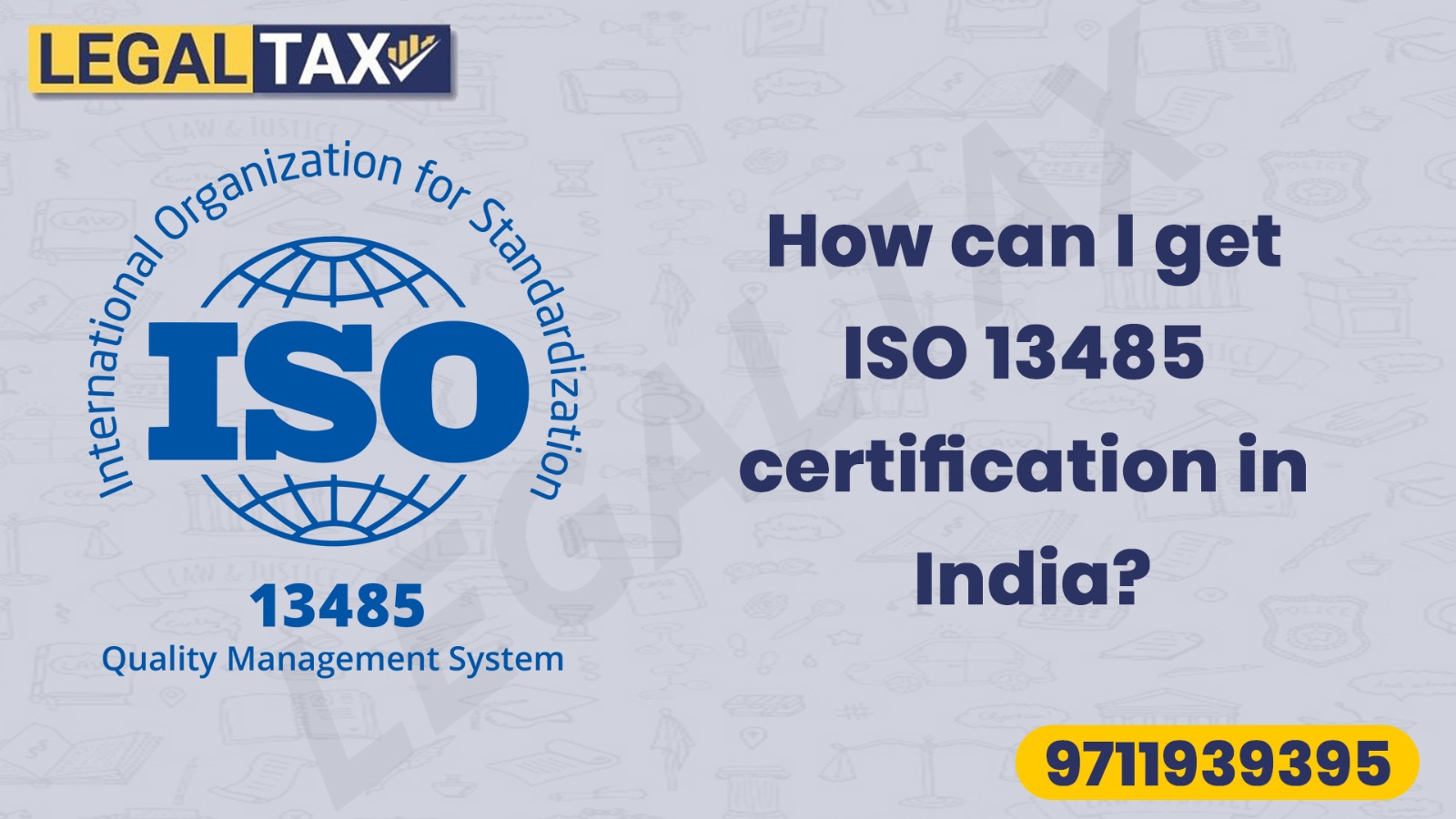ISO 13485 is a standard that specifies requirements for a quality management system for medical devices. To obtain ISO 13485 certification in India, you can follow the steps below:
Determine if your company is eligible for ISO 13485 certification: The standard is applicable to organizations involved in the design, development, production, installation, and servicing of medical devices. Ensure that your organization meets these criteria.
Identify an accredited certification body: Look for certification bodies that are accredited by a recognized accreditation body. Accreditation bodies in India include the National Accreditation Board for Certification Bodies (NABCB) and the Joint Accreditation System of Australia and New Zealand (JAS-ANZ). You can also search for certification bodies through the International Accreditation Forum (IAF) website.
- Conduct a gap analysis: Conduct a gap analysis to identify areas in your quality management system that need improvement. This can be done internally or by hiring a consultant.
- Implement improvements: Based on the findings of the gap analysis, implement necessary improvements to your quality management system.
- Conduct an internal audit: Conduct an internal audit to ensure that your quality management system is in compliance with the requirements of ISO 13485.
- Engage with the certification body: Contact the certification body and request a quote for the certification process. The certification process will include a document review, site audit, and issuance of the certification.
- Conduct the certification audit: The certification audit will be conducted by the certification body. The audit will verify that your quality management system is in compliance with the requirements of ISO 13485.
- Address any non-conformities: If any non-conformities are identified during the certification audit, address them within the given timeframe.
- Receive certification: If your quality management system is found to be in compliance with the requirements of ISO 13485, the certification body will issue a certificate.
- Maintain the certification: To maintain the certification, ensure that your quality management system continues to meet the requirements of ISO 13485. You will be subject to periodic surveillance audits by the certification body to ensure ongoing compliance.
Achieving ISO 13485 certification demonstrates your organization’s commitment to quality management and can enhance your reputation with customers and regulators. It can also help to streamline your processes and reduce costs by improving efficiency and reducing waste.
ISO 13485 Process in India: A Comprehensive Guide
ISO 13485 is a globally recognized standard for medical device quality management systems. It provides a framework for the design, development, production, and distribution of medical devices while ensuring that they meet regulatory and customer requirements. In India, the medical device industry is growing rapidly, and compliance with ISO 13485 has become increasingly important for organizations operating in this sector. In this article, we will provide a comprehensive guide to the ISO 13485 process in India, including the benefits, requirements, and steps involved in certification.
Benefits of ISO 13485 Certification in India
ISO 13485 certification provides numerous benefits for organizations in India, including:
- Improved Product Quality: ISO 13485 emphasizes the importance of quality management throughout the entire product lifecycle. By implementing an ISO 13485 compliant quality management system (QMS), organizations can ensure that their products meet regulatory and customer requirements and are of high quality.
- Enhanced Regulatory Compliance: ISO 13485 is a globally recognized standard for medical device quality management systems. By achieving certification, organizations can demonstrate their compliance with regulatory requirements in India and international markets.
- Increased Customer Confidence: ISO 13485 certification demonstrates an organization’s commitment to quality and customer satisfaction. This can lead to increased customer confidence and loyalty.
- Competitive Advantage: ISO 13485 certification can provide a competitive advantage for organizations in India, particularly when bidding for contracts or competing in international markets.
ISO 13485 Requirements
ISO 13485 sets out a series of requirements for a QMS, including:
- Management Responsibility: Top management should demonstrate leadership and commitment to the QMS, including establishing a quality policy, assigning responsibilities, and ensuring that the QMS is integrated into the organization’s overall business strategy.
- Resource Management: The QMS should include resources, infrastructure, and support mechanisms to ensure that the organization can achieve its quality objectives.
- Product Realization: The QMS should include a series of processes that are designed to achieve the organization’s quality objectives, including design and development, production, service delivery, and customer satisfaction.
- Measurement, Analysis, and Improvement: The QMS should include a systematic approach to monitoring and measuring performance, including internal audits, management reviews, and corrective and preventive actions.
ISO 13485 Certification Process in India
The ISO 13485 certification process in India involves the following steps:
Step 1: Preparation
The first step in the ISO 13485 certification process is to prepare for certification. This involves understanding the requirements of the standard, developing a QMS, and identifying any gaps between the QMS and the standard.
Step 2: Internal Audit
The next step is to conduct an internal audit of the QMS. This involves reviewing the QMS to ensure that it meets the requirements of the standard and is functioning effectively. Any gaps identified during the audit should be addressed before proceeding to the next step.
Step 3: Certification Body Selection
Once the QMS has been audited internally, the organization must select a certification body. The certification body will conduct an external audit of the QMS to determine if it meets the requirements of the ISO 13485 standard.
When selecting a certification body, it is essential to choose an organization that is accredited by a recognized accreditation body such as the National Accreditation Board for Certification Bodies (NABCB) or the International Accreditation Forum (IAF).
Step 4: Stage 1 Audit
The first stage of the external audit is a document review. The certification body will review the organization’s QMS documentation to ensure that it meets the requirements of the ISO 13485 standard.
Step 5: Stage 2 Audit
The second stage of the external audit is an on-site audit. The certification

